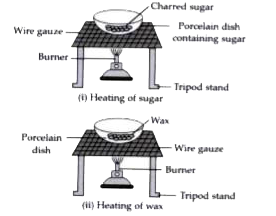How many kinds of levers are there? How are they different from each other?
Step-by-Step Text Solution:
1. Understanding Levers: Levers are simple machines that help lift or move loads with less effort. They consist of a rigid bar that pivots around a point called the fulcrum.
2. Types of Levers: There are three main types of levers, classified based on the arrangement of the fulcrum, load, and effort.
3. Class 1 Lever:
- Arrangement: In a Class 1 lever, the fulcrum is positioned between the load and the effort.
- Example: A seesaw is a classic example of a Class 1 lever. When one person pushes down on one side (effort), the other side goes up (load) due to the fulcrum in the middle.
4. Class 2 Lever:
- Arrangement: In a Class 2 lever, the load is situated between the fulcrum and the effort.
- Example: A wheelbarrow is an example of a Class 2 lever. The wheel (fulcrum) is at one end, the load is in the middle, and the effort is applied at the handles.
5. Class 3 Lever:
- Arrangement: In a Class 3 lever, the effort is applied between the fulcrum and the load.
- Example: A pair of tweezers is an example of a Class 3 lever. The fulcrum is at one end, the load is at the other end, and the effort is applied in the middle.
6. Summary of Differences:
- Class 1 Lever: Fulcrum is in the middle (e.g., seesaw).
- Class 2 Lever: Load is in the middle (e.g., wheelbarrow).
- Class 3 Lever: Effort is in the middle (e.g., tweezers).
- Arrangement: In a Class 1 lever, the fulcrum is positioned between the load and the effort.
- Example: A seesaw is a classic example of a Class 1 lever. When one person pushes down on one side (effort), the other side goes up (load) due to the fulcrum in the middle.
- Arrangement: In a Class 2 lever, the load is situated between the fulcrum and the effort.
- Example: A wheelbarrow is an example of a Class 2 lever. The wheel (fulcrum) is at one end, the load is in the middle, and the effort is applied at the handles.
- Arrangement: In a Class 3 lever, the effort is applied between the fulcrum and the load.
- Example: A pair of tweezers is an example of a Class 3 lever. The fulcrum is at one end, the load is at the other end, and the effort is applied in the middle.
- Class 1 Lever: Fulcrum is in the middle (e.g., seesaw).
- Class 2 Lever: Load is in the middle (e.g., wheelbarrow).
- Class 3 Lever: Effort is in the middle (e.g., tweezers).
Similar Questions
How many kinds of electric charge are there?
View SolutionWhy are xylem and phloem called complex tissues? How are they different from each other?
View SolutionHow do Indian lakes differ from each other?
View SolutionCompare the two given changes. How are they different from each other?

View SolutionClassify intensive subsistence agriculture into two categories practiced in the world. How are they different from each other? Explain.
View SolutionThe flower of brinjal is referred to as chaamogamoul while that of beanin cleistogamous. How are they different from each other ?
View SolutionBanana is a parthenocarpic fruit whereas oranges show polyembryony. How ar they different from each other with respect to seeds ?
View SolutionBanana is a parthenocarpic fruit where oranges show polyembryony. How are they different from each other with respect to seeds?
View SolutionHow do axon and dendron differ from each other?
View SolutionName two most important genus of Hominids. How they are different from each other?
View Solution